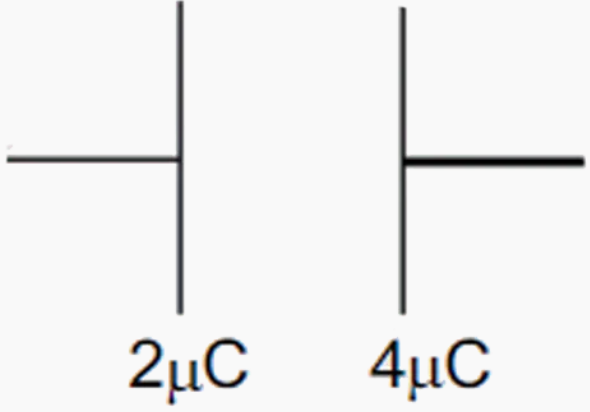Two identical parallel plate capacitors are placed in series and connected to a constant voltage source of V0 volt. If one of the capacitors is completely immersed in a liquid with dielectric constant K, the potential difference between the plates of the other capacitor will change to -
KK+1V
K+1K
2KK+1
K+12KV
The correct Answer is:A
In series combination, charge is constant.
∴ V∝1C
Now, V2V1=KCC=K1⇒V2=V2K
But V1+V2=VorV2K+V2=V
⇒ V2=KK+1V
Topper's Solved these Questions
- ELECTROSTATICSBook:MHTCET PREVIOUS YEAR PAPERS AND PRACTICE PAPERSChapter:ELECTROSTATICSExercise:MHT CET Corner
Explore 29 Videos
- ELECTROSTATICSBook:MHTCET PREVIOUS YEAR PAPERS AND PRACTICE PAPERSChapter:ELECTROSTATICSExercise:PRACTICE EXERCISE (Exercise 1 (TOPICAL PROBLEMS))
Explore 87 Videos
- ELECTRONS AND PROTONSBook:MHTCET PREVIOUS YEAR PAPERS AND PRACTICE PAPERSChapter:ELECTRONS AND PROTONSExercise:MHT CET CORNER
Explore 19 Videos
- FORCEBook:MHTCET PREVIOUS YEAR PAPERS AND PRACTICE PAPERSChapter:FORCEExercise:Exercise 2 (Miscellaneous Problems)
Explore 19 Videos
Similar Questions
In a parallel plate capacitor of capacitor 1μF two plates are given charges 2μC and 4μC the potential difference between the plates of the capacitor is

View SolutionA capacitor with air as the dielectric is charged to a potential of 100 volts. If the space between the plates is now filled with a dielectric of dielectric constant 10, the potential difference between the plates will be
View Solution
Knowledge Check
Two identical parallel plate air capacitors are connected in series to a battery of emf V. If one of the capacitor is completely filled with dielectric material of constant K, then potential difference of the other capacitor will become
AKV(K+1)BKVK+1CK−1KVDVK(K−1)Two identical parallel plate capacitors of same dimensions joined in series are connected to a constant voltage source. When one of the plates of one capacitor are brought closer to the other plate :
AThe voltage on the capacitor whose plates come closer is greater than the voltage on the capacitor whose plates are not movedBThe voltage on the capacitor whose plate come closer is lesser than the voltage on the capacitor whose plates are not movedCThe voltage on the two capacitor remain equalDThe applied voltage is divided among the two inversely as the capacitanceWhen a parallel plate capacitor is connected to a source of constant potential difference
Aall the charge drawn from source is stored in the capacitorBthe potential difference across capacitor grows very rapidly initially and this rate decreases to zero eventuallyConly half of the energy drawn from the source is dissipated outside the capacitorDall of these
A parallel plate capacitor is first connected to a constant voltage source. It is then disconnected and ·then immersed in a liqnid dielectric, then:
View SolutionTwo identical capacitors are connected in series with a source of constant voltage V. If Q is the charge on one of the capacitors, the capacitance of each capacitor is :
View SolutionTwo identical parallel plate capacitors are connected in parallel combination. Total charge on capacitors is Q0. If one of the capacitors is kept in a dielectric medium of constant K, then the total charge on both the capacitors will change to (P.D. across them is kept constant)
View SolutionA parallel plate capacitor carries a harge Q. If a dielectric slab with dielectric constant K=2 is dipped between the plates, then
View SolutionTwo parallel plate air capacitance of same capacity C are connected in series to a battery of emf E. Then one of the capacitors is completely filled with dielectric material of constant K. The change in the effective capacity of the series combination is
View Solution